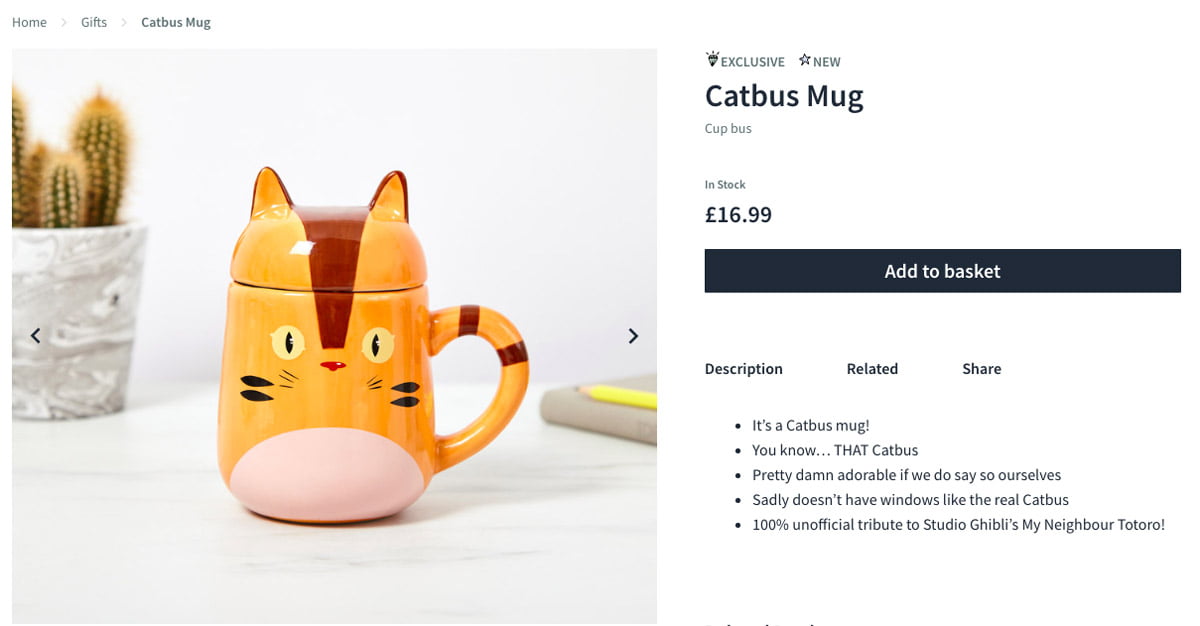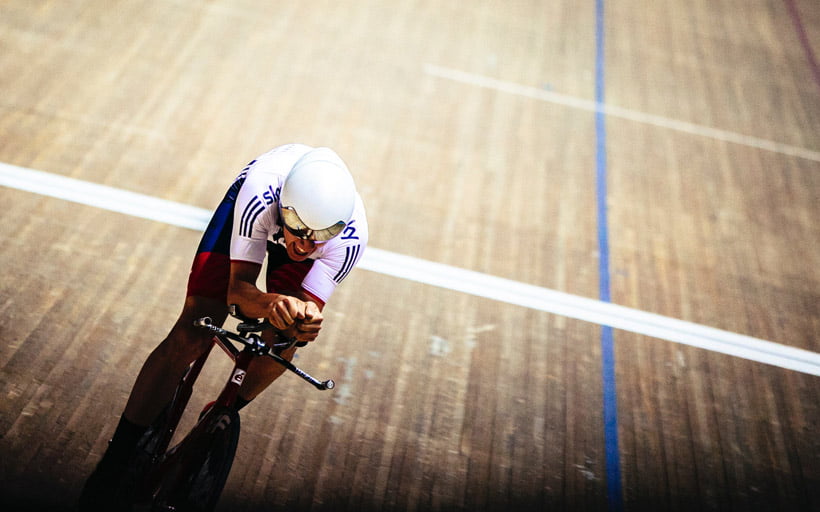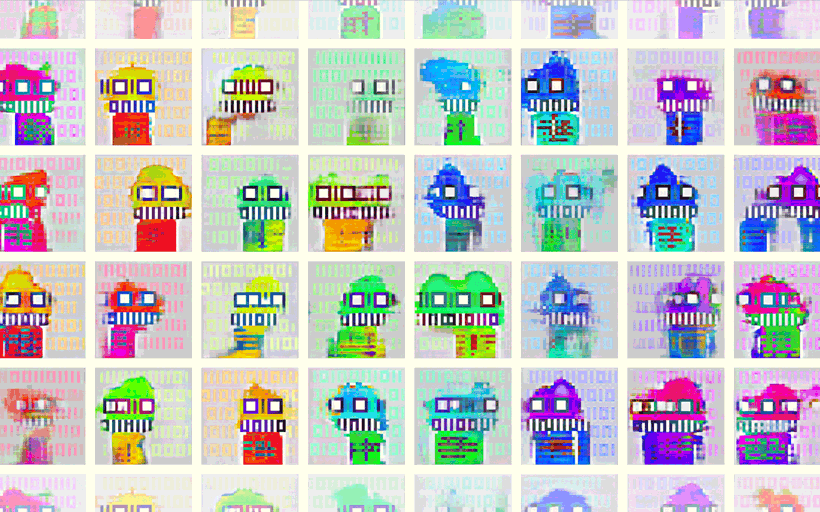Six SEO easy wins for your print on demand store
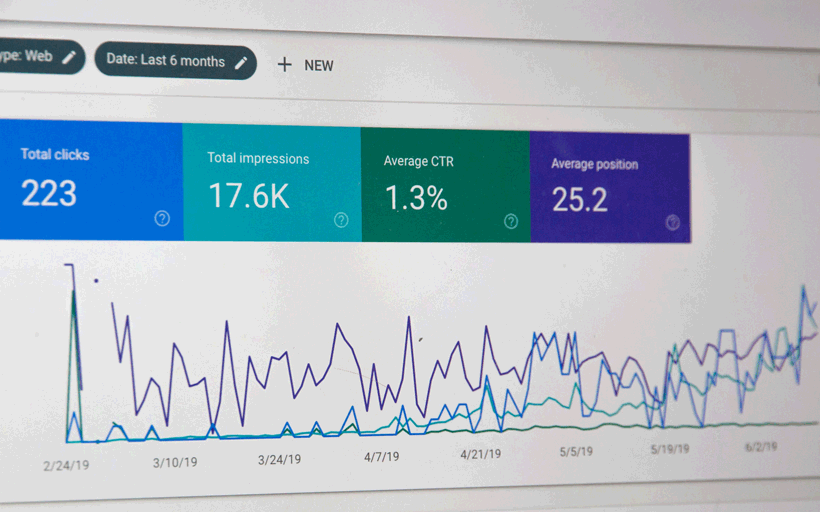
Interested in joining the world's leading print on demand platform?
In 1883, a printer in Cheyenne, Wyoming was working on a telephone directory. As he worked, he realised he was lacking a fairly essential ingredient to printing: white paper.
No problem, he thought, picking up a pile of yellow paper instead. Little did he know he was creating history: the Yellow Pages was born.
And for years, the Yellow Pages became the way to find businesses in your area. Need a plumber? Yellow Pages. Electrician? Yellow Pages.
But after 51 years of connecting businesses with customers in print, the iconic Yellow Pages went digital.
Talking about the change, Richard Hanscott, CEO of Yell, said:
Like many businesses, Yell has found that succeeding in digital demands constant change and innovation.
These days, search engines are the only directories that matter. Yell realised this and are now focusing on creating the best website they can, with aims to "help a million businesses be found, chosen, and trusted by more customers online by 2020."
The thing with search engines is that they aren't organised alphabetically like traditional directories, they are organised by content relevance. The relevance of any given content is determined by search engine optimisation (SEO).
If you don't know much about it, SEO can be pretty scary. It's an $80 billion industry. It's complex, unforgiving, everchanging, and most importantly, the visibility of your store relies on it.
But there's no need to be afraid!
You don't need to be an SEO expert to optimise your site and product listings for organic discovery. You just need to know the basics, and the basics are mostly common sense. Tips that will move the needle with the least possible investment of time and effort. Think of these as 'SEO easy wins'.
In this blog post, we're going to look at six quick and easy wins that will help you improve the discoverability of your print on demand store.
Understanding search engines
First things first: you need to understand the role of search engines and what makes them tick. Not the whole list of ranking factors — although that's out there if you want it — but the top level stuff.
The key thing to remember is that the overall goal of a search engine is to offer the best search experience for their users. That's it. If they aren't doing that then they aren't doing their job properly and, like any business, they won't hit their targets, they'll lose profit, and ultimately fail.
So it's really important to search engines that they show users the most helpful results. To do this, they need to correctly interpret search intent to understand exactly what people are searching for, and then deliver the most comprehensive, accurate result to meet that intent.
Here's an example:
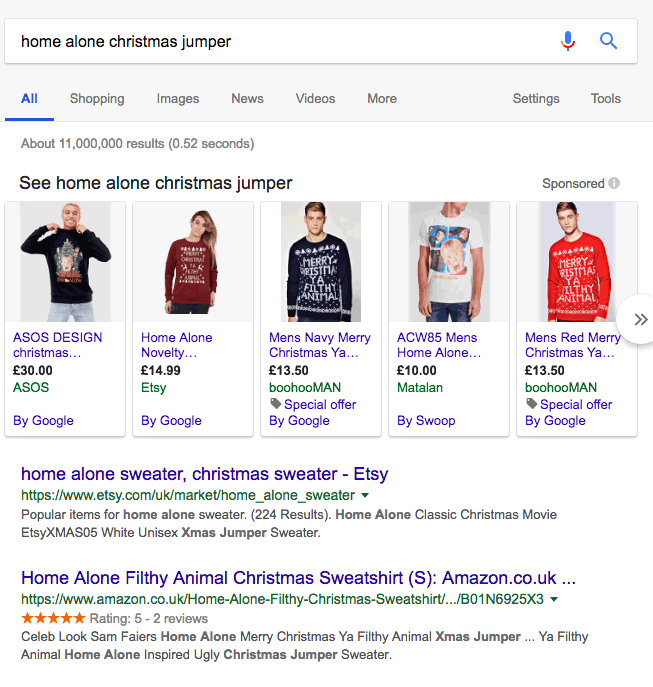
The user has searched for "home alone christmas jumper" and the search engine has correctly interpreted that this means the user most likely wants to buy Christmas sweaters that relate to the famous film franchise.
This is more impressive than it looks! In just a few milliseconds, the search engine has been able to recognise that 'home alone' is a film, and that the user's intent is to purchase an item.
Your role in all of this is to make sure that your store and product pages offer the most helpful results available for the keywords your customers are searching for.
Keyword research
Keyword research is a real turn-off for a lot of people. It sounds like a huge endeavour, but in fact, it doesn't have to be, especially for print on demand retailers. It's as difficult as you make it!
Keyword research is important because, as mentioned above, you need to make sure you're ranking for the keywords that your customers are searching for. To do this, you need to sprinkle the keywords all over your store: in title tags, product descriptions, image alt tags &dmash; everywhere!
This sends the right signal to search engines that will be crawling your site in order to understand your offering and present it to the most relevant users online.
And when we say 'sprinkle', we mean it. You need to use your keywords sparingly and organically throughout your site. Stuffing your store pages full of keywords won't work. This is known as a 'black hat' SEO technique and it will have the opposite effect on your ranking. Instead of showing up in the first couple of results, you will be blacklisted by search engines and your site won't appear at all.
Take a look at these example product descriptions, both ranking for the keyword 'beach towel':
- White hat SEO
- Surf's up! Whether you want to dry off after riding waves or reserve your favourite lounger, do it in style with our pineapple print beach towel! Made of 100% cotton for added comfort, this 160cm x 80cm towel will ensure you stand out on the beach this summer!
- Black hat SEO
- Pineapple print beach towel. This beach towel is 160cm x 80cm which is a good size for a beach towel. This beach towel is also 100% cotton. Get your beach towel today.
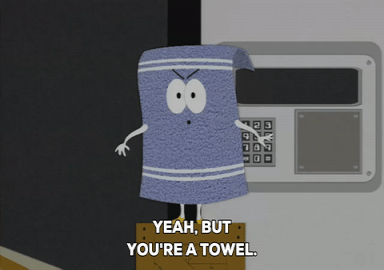
Although the black hat example includes the keyword more times, the copy isn't natural or engaging and therefore won't resonate with potential customers. Search engines won't be fooled by this. Google knows that engaging web copy is more likely to be helpful to customers, so you need to use your keywords naturally in order to resonate with both search engines and customers alike.
Of course, there's no point in trying to rank for keywords that no one is searching for. One of the quickest ways to validate the search volume of your chosen keywords is to use a keyword tool.
There are lots out there, and most of them are free. Here are some of the most popular:
These tools will give you snapshot stats around search volume, competition, and the CPC (cost per click) if you want to create paid ads. For example, if you have the Keywords Everywhere Chrome Extension installed you will see suggested keywords every time you search on Google:
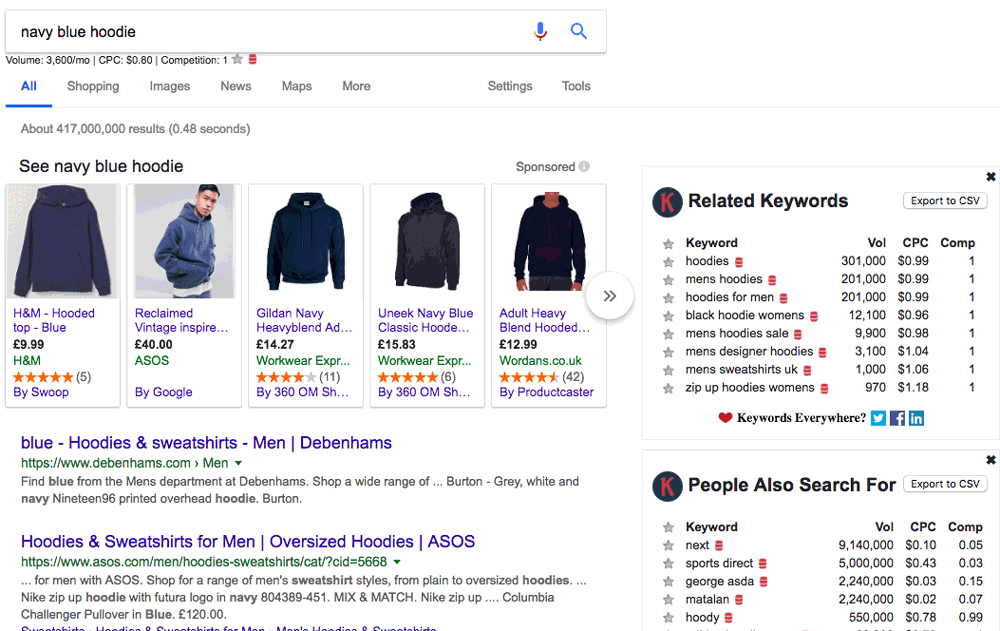
You can also use Google Trends {:rel="external"} to evaluate different levels of interest and buzz, and to help you decide on a keyword if there are multiple ways of saying the same thing.
For example, you could list a product as a 'hooded sweatshirt', 'hoodie', or 'hoody'…but which is the one that most people will be searching for?
Running the keywords through Google Trends gives you an unequivocal answer:
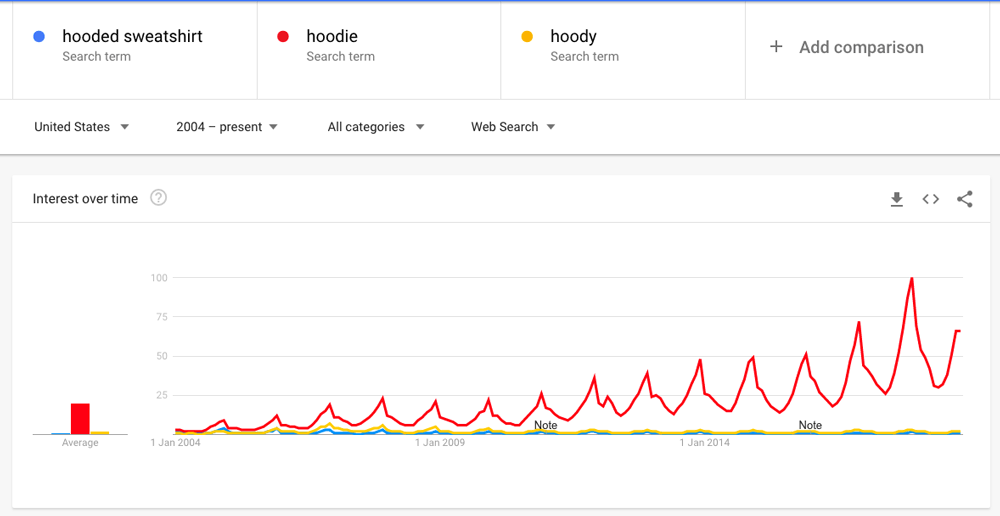
And the related queries will show you 'breakout' or emerging keywords related to that keyword which may be of interest:
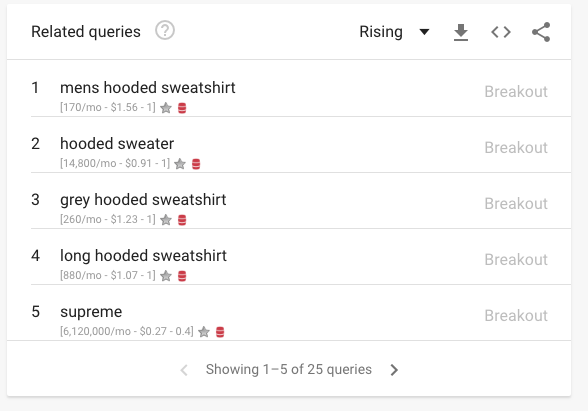
This is great for anyone with an online store, but for a print on demand retailer like you, it's even better. Think about it…you could head to Google Trends, discover search terms that are gaining popularity and then instantly create products that fit the bill!
As you can see from the graph above, the term 'hoodie' spikes every single year in January — probably because most people are cold! You could use this as an opportunity to release new hoodies, like this:

Okay, now that you understand search engines and keyword research, let's get into some of those really easy wins! Here are six quick and easy ways you can optimise your print on demand store.
1. Title tags
Title tags are one of the most important on-page SEO factors. Just take a look at this chart that shows the correlation between keywords in title tags and Google ranking:
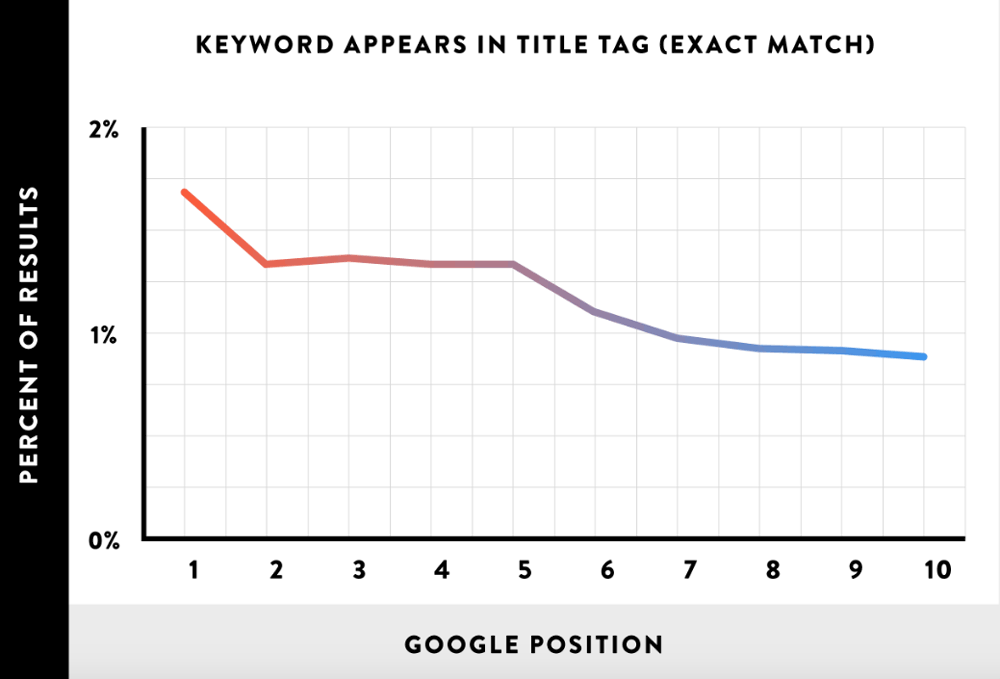
A title tag is a HTML element that specifies the title of your web page. They are the clickable headlines that appear on search engine results pages (SERPs):
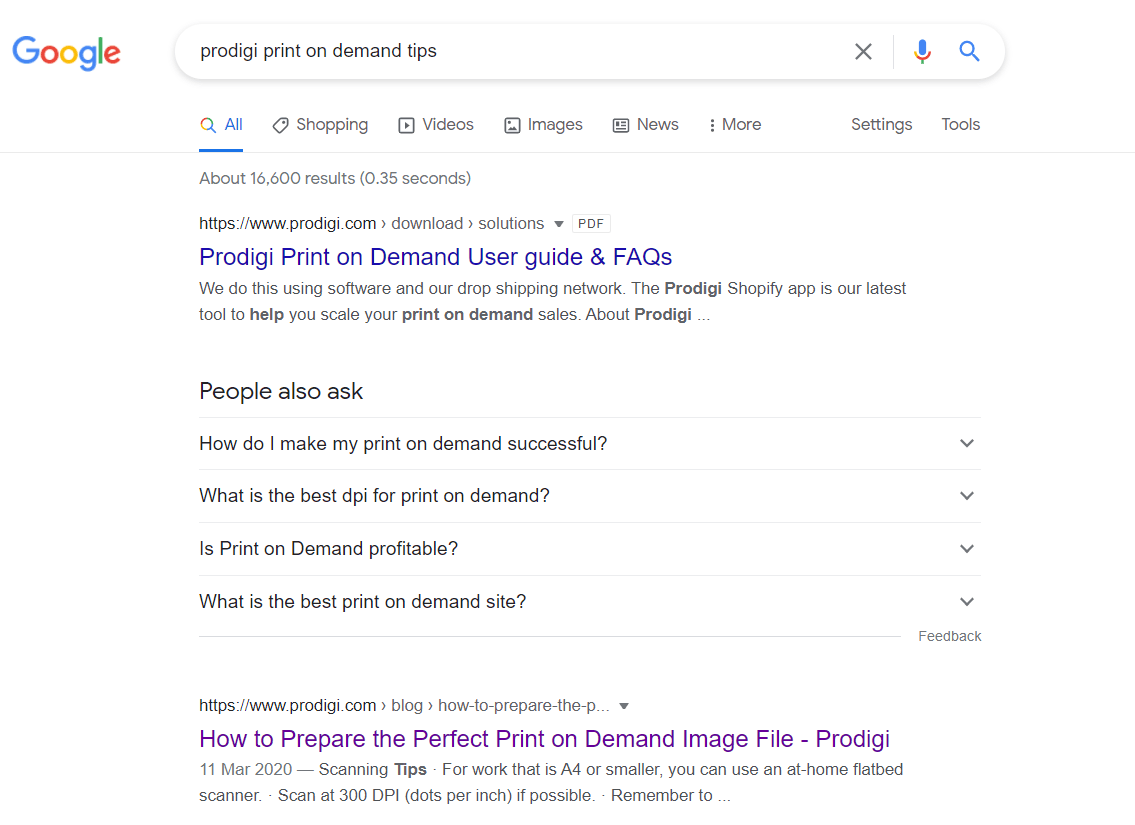
Every single page on your store has a title tag, and you need to make sure each one will stick out on the SERP so that users click on them and visit your store.
Google typically displays the first 50-60 characters of a title tag, so stick to this length to optimise your titles. Another way to optimise your title tags is to start with the keyword you're trying to rank for. According to Moz, title tags that start with a keyword tend to perform better than title tags that include the keyword towards the end.
The above refers to title tags on products and collections — but don't forget to change the title tag for your actual store. Changing your store title and meta description within BigCommerce or Shopify is really easy.
Here's how to do it in Shopify: log in, head to 'Online Store', and then 'Preferences':

Then just enter a title tag that best describes your store. In the example above, we chose to lead with the keyword 'cat lover gift' and also ensured that the title tag was no more than 60 characters.
Title tags are important for SEO because having the most clickable, enticing title on the page is a big deal! If you start getting more clicks than results above you, guess what Google's going to do? Of course, it's going to assume that your content is better and rank it accordingly — pushing you up the SERP towards spot number one.
2. Collection descriptions
Staying with our Shopify example, when you add designs in our app, you create different 'collections'. These can also be optimised for search engines. Head to 'Products' > 'Collections' and then click on one of your collections:
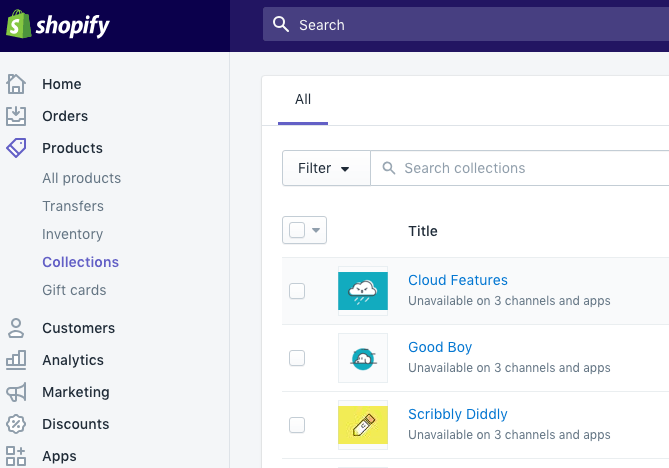
Opening the collection, you will see all of the different parts that can be optimised for search — the title, the meta description, the image:
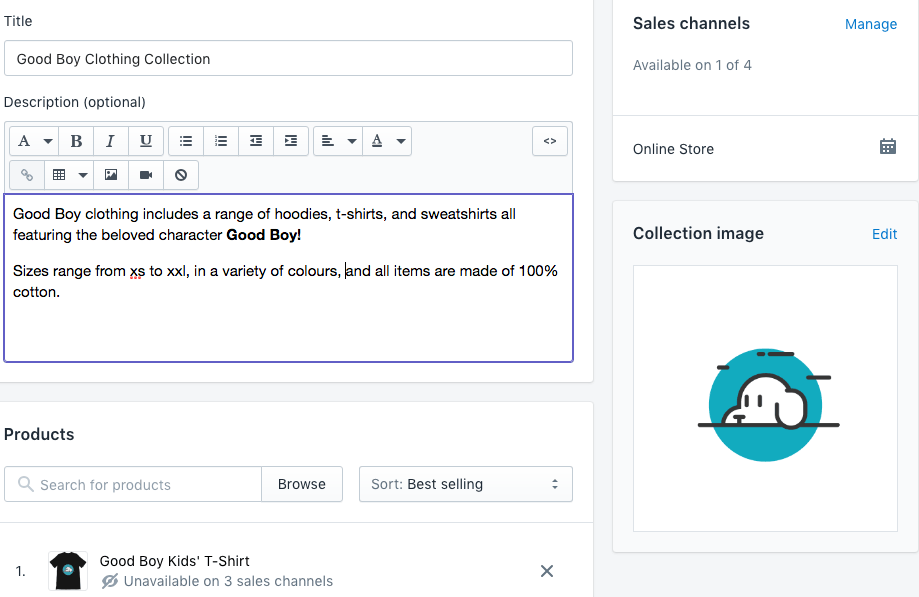
To add image alt text, click on 'edit' above the image:
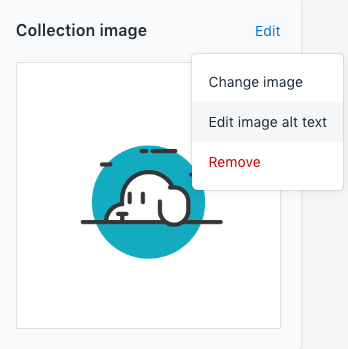
For an in-depth overview of alt text and image tags, check out point 4 below.
If you scroll down to 'search engine listing preview' you can view and edit how your collection will appear on a SERP:

3. Product descriptions
Each Prodigi product you add to your store comes with a generic product description, like this:
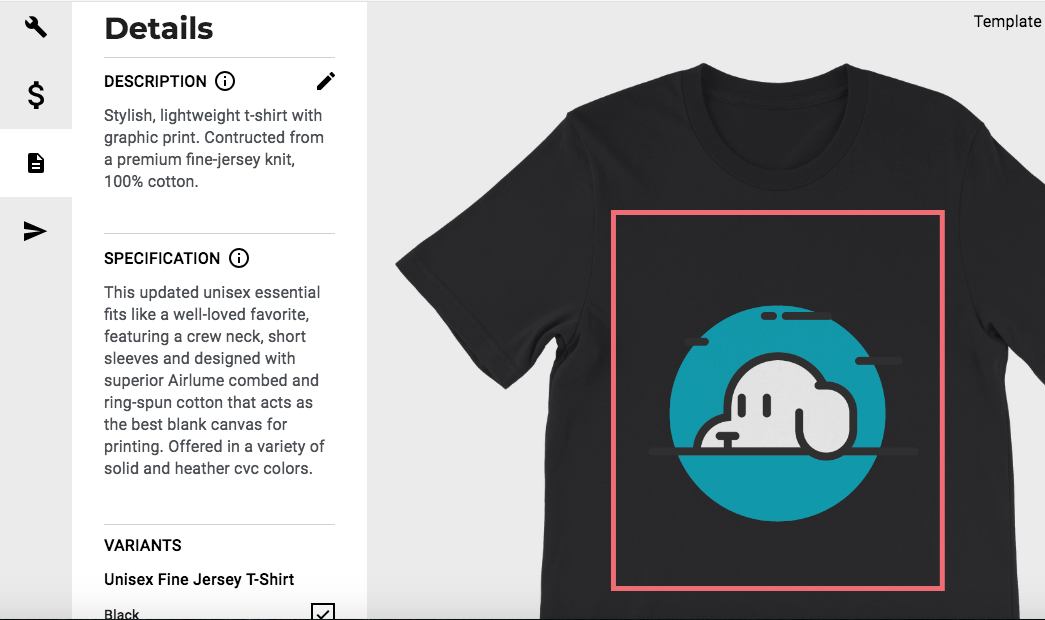
This is great, and makes it easy for you to get your store up and running in no time. But it minimises the amount of unique content on your site. To really stand out, you should create unique product descriptions for every product that you sell.
This is not only a good way to improve your SEO by giving search engines unique content to crawl (resulting in increased discoverability!), it also makes your site more engaging and attractive for the potential customers that are browsing your product pages.
Here's an example of a great product description:
It oozes personality and also includes the keywords 'catbus' and 'Studio Ghibli'. Better yet, there is an even more detailed description further down the page:

This description does a perfect job of giving potential customers the information they need to make a purchase decision, and it also keeps them entertained.
The secret to great product descriptions is to put your customer first while keeping your keywords at the top of your mind and adding them to your copy naturally.
4. Image alt tags
When search engines crawl your site looking for clues as to the intent of your web pages, they don't just look at text. Images also send search engines signals that help them better understand your site. They send these relevancy signals through their filename and alt tags (or alt text).
Alt tags act as anchor text for your images and if they include your keyword then that is one more signal to search engines that your page is a useful source for that keyword. Basically, the more places you can include your keyword, the better!
As we showed in the screenshot above, you can add alt text to your collection image by clicking the edit button. This will take you to the following pop up:
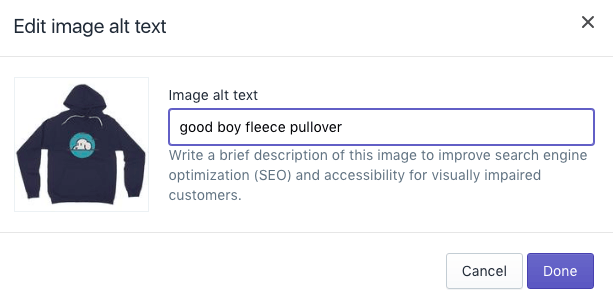
All you need to do is enter a brief description that includes your keyword.
You can also edit the alt text of your product images in a similar way. Just click on the Products tab, find the product you want to change, and scroll down to images:
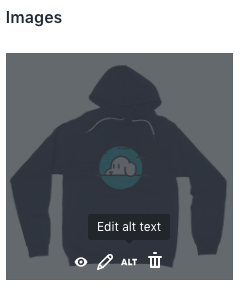
As you can see, hovering over the image gives you the option to edit the alt text. Simply click this and include a brief description:
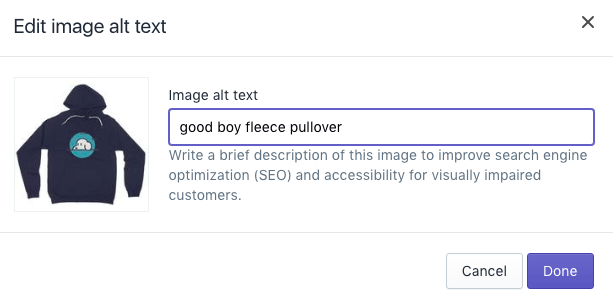
Easy changes like this can make an incredible difference to your on-page SEO.
5. Let software work for you
As mere human beings, the task of search engine optimisation can sometimes feel overwhelming; especially when you're up against Google's super-advanced web-crawling software.
So, why not fight fire with fire? Use a software tool to audit your site for you and give you actionable recommendations that will improve your SEO. Shopify's SEO Expert Pro and BigCommerce's FavSEO are inexpensive apps that do just that.
6. Backlinks
Link building is a huge topic. We could write a book about it. In fact, lots of people already have. But, in the interest of easy wins, backlinks are essentially 'votes' for your website. They are a key driver of domain authority for your site and can really boost the overall ranking of your store and product pages.
A backlink is created when someone links to your site from theirs. People usually do this when they want to cite you as a source in their own content. A quick way to build backlinks, if you are already creating content, is to share your content. The more you share it, the more other people will see it–and they might share it too!
If you have some time, then creating informational and engaging content can really help you to rank for keywords — even those high competition ones that you thought were impossible to rank for.
Just be sure to link to your store throughout this content so that you have a way to direct people to your product pages. After all, your end goal is always going to be to increase sales.
If you really want to take a dive into the world of backlinks and link building, this is a great Beginner's Guide for Ecommerce Stores.
Time to start winning!
SEO doesn't take as much time and money as you might have thought. Of course, the more you put in, the more you are going to get out. But the great news is that you can start optimising your print on demand store in quick and easy ways that make a big difference to your online visibility. We hope you found these six SEO easy wins useful!
For more useful tips to help you run your print on demand store, check out our blog post on the ten steps to a perfect on demand launch.
